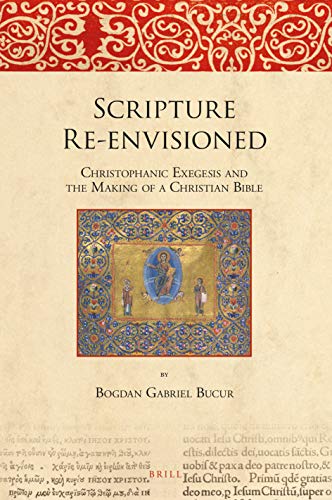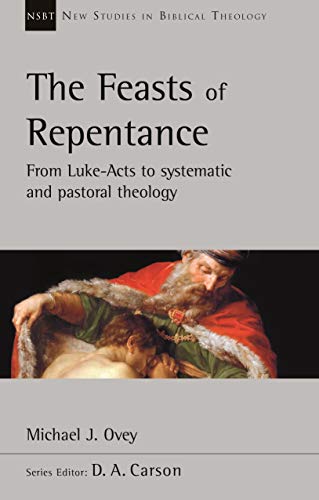Helping Without Hurting in Church Benevolence
Written by Steve Corbett and Brian Fikkert, with Katie Casselberry Reviewed By Andy HuetteWhen publishers release spin-offs of a highly successful book, it’s usually cause to raise an eyebrow. The cynic wonders if it’s another attempt to milk the literary cow for all she’s worth. Thus, when Corbett and Fikkert’s influential work When Helping Hurts (Chicago: Moody, 2009) spawned three additional works, including Helping Without Hurting in Church Benevolence (2015), there was reason to question the value of each ensuing publication.
Helping Without Hurting in Church Benevolence, however, is no mere money-grab. Instead, Corbett and Fikkert—along with Katie Casselberry—have once again provided a needed tool for the church. At 154 pages, they’ve written a user-friendly manual designed for church benevolence teams to use in formulating wise and compassionate practices. The book’s purpose is to “help your church successfully steward the opportunity that arises when [asked] for financial assistance to pay for things such as electric bills, rent, gas, or food” (p. 7). Using the principles of When Helping Hurts and numerous real-life scenarios, the book serves as a consultant to church benevolence ministries looking for direction and wisdom.
The book is divided into two sections, with chapters 1–2 devoted to “A Foundation for Effective Benevolence” and chapters 3–6 aimed at the nuts and bolts of “Designing and Implementing an Effective Benevolence Ministry.” In the first chapter, poverty is defined as a fractured relationship between mankind and self, others, creation, and God. With this definition of poverty, all people, not just the materially poor, are impoverished in some form. Without this framework, a purely materialistic view of poverty often prevails and “many of us think the best way to alleviate poverty is to simply give material things to low-income people: money to pay the electric bill, turkeys and toys and Christmas, warm clothing during the winter” (p. 18). A holistic view of poverty not only leads to better care for the materially poor but also confronts the pride of the materially non-poor and forms a “context that Christ can use to bring healing to the ongoing brokenness in both of our lives” (p. 23, emphasis mine). Chapter 2 acknowledges the complexity of poverty and encourages those helping low-income individuals to be slow to draw linear conclusions about the cause of poverty. Trauma, oppressive systems, racial discrimination, and demonic forces are briefly explored as potential contributing factors to be considered when seeking to understand an individual’s plight.
In part two, one finds a step-by-step process for creating or tweaking a church’s benevolence practices, complete with sample forms and action steps. Chapter 3 is based on a list of nineteen questions designed to help form and assess benevolence philosophy and policies. Each question is followed by a few paragraphs of practical considerations and lessons learned. With an exhortation to “operate out of a gospel-centered humility, reminding ourselves that we too are broken and need Christ’s ongoing work in our own lives” (p. 78), chapter 4 is aimed at the ongoing nature of alleviating poverty. Specifically, the benevolence “ally” and the one in need work together to form an action plan which provides ongoing care while requiring personal initiative. Chapter 5 provides some insight into how to enlist the church in benevolence work as well as how to work alongside existing organizations. The book concludes in chapter 6 with eight case-studies designed to test-drive the philosophy articulated within the book. Each case-study includes group discussion questions and a response from the authors to the sample scenarios.
The strength of Helping Without Hurting in Local Benevolence is its practicality. The chapters are concise; the authors first articulate a condensed version of the When Helping Hurts philosophy, and then offer a series of checkpoints for implementation. Clear, boldface “Task to Complete” headings function as a to-do list throughout part two. As a result, the book can serve as a ready-made benevolence kit for churches to develop a benevolence ministry from scratch, a training tool for those who are joining established benevolence ministries, or a guide for functioning benevolence ministries to evaluate their current practices.
The authors also demonstrate noticeable discernment throughout the book. Often after suggesting a policy or best-practice, they remind the reader to be flexible. Their intake process, for instance, is “not meant to be a one-size-fits-all formula to mechanically follow” (p. 77). After advocating that recipients of benevolence also contribute toward some portion of their bills, they add that “each situation is different, and there is no absolute rule” (p. 103). This posture of flexibility also appears in the introduction where they state that “poverty alleviation is not simply about applying a recipe” but about reliance on “the Holy Spirit, prayer, wisdom, and discernment” (p. 10). Corbett, Fikkert, and Casselberry have discerned the peril of policy, which can be cold-hearted inaction. Learning from the unintended fruit of their first book, that “some churches became paralyzed and were afraid to help low-income people at all, lest they hurt them in the process of trying to help” (p. 10), they regularly plea for action. They counsel to “err on the side of giving rather than withholding material assistance (p. 11) and conclude their policy chapter with a call to “get moving, refusing to let perfectionism get in the way” (p. 76).
One of the most helpful contributions of the book is the distinction between relief and development. The goal of benevolence work is development, but many churches are stuck in relief mode (i.e., giving handouts). “One of the most common and detrimental mistakes that North American churches make in their benevolence work,” they contend, “is using a relief approach in situations that call for development” (p. 61). The distinction between relief and development gives benevolence teams useful categories to determine what kind of assistance is truly most helpful to a person in need.
The lone criticism I have of the book is minor. Three categories of poverty alleviation are introduced—relief, rehabilitation, and development—but only two sentences are spent distinguishing rehabilitation from development. Doubtless, rehabilitation is a legitimate poverty alleviation category, but because it is neither well-defined nor well-illustrated, it may needlessly complicate an otherwise very helpful paradigm. In my view, it would have been better to omit it for the purposes of this short book and to encourage benevolence teams to think in terms of either relief or development. Whatever the case, the authors wisely advise that when faced with a decision about how best to help someone, the question to ask is not what category do they belong to, but, “If I take this action, will I be contributing [to] or detracting from the long-term goal of empowering this person to live in right relationship with God, self, others, and the rest of creation?” (p. 29, emphasis original).
In addition to the practicality and discernment of their work, the authors’ approach to poverty alleviation is consistently anchored into the hope of the gospel. Their philosophy is not merely good charity practices painted with Bible verses. No, they repeatedly convey their belief that the answer to poverty alleviation is the power of God through the gospel of Christ, the one who is “reconciling all things, transforming whole people, both bodies and souls” (p. 24, emphasis original). It is Christ’s power alone which can “fix all that is broken in the low-income person, in you, and in the world in which you both live” (p. 10).
Helping Without Hurting in Local Benevolence does exactly what the authors set out to do: it provides a tool for churches to better steward God-given benevolence opportunities. It will become required reading for the benevolence team in our church, and—I hope—in many other churches too.
Andy Huette
Andy Huette
Christ Community Church
Gridley, Illinois, USA
Other Articles in this Issue
What are we to make of Cultural Marxism? This article seeks to answer that question, first, by outlining the key elements and legacy of classical Marxism; second, by exploring the neo-Marxism of Antonio Gramsci; third, by assessing the main ideas and impact of “the Frankfurt School”; and, fourth, by offering some reflections on (i) the links between these thinkers and various contemporary developments, (ii) the wisdom of employing the term Cultural Marxism, and (iii) how Christians should respond to the current “culture wars” that are polarizing the Western world.
The diverse essays in Stanley Rosenberg’s edited volume Finding Ourselves After Darwin: Conversations on the Image of God, Original Sin, and the Problem of Evil (Grand Rapids: Baker Academic, 2018) offer a Christian analysis of the human person in light of evolutionary thinking...
Do Formal Equivalent Translations Reflect a Higher View of Plenary, Verbal Inspiration?
by William D. MounceThe article begins by establishing five categories of translation theory and argues that functional translations like the NIV do in fact reflect the meaning of every Greek word, but not in the same way as formal equivalent translations do...







